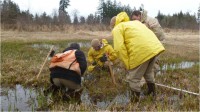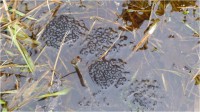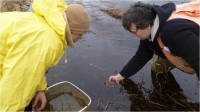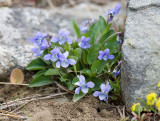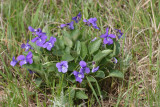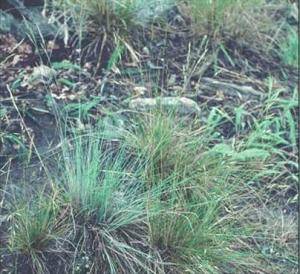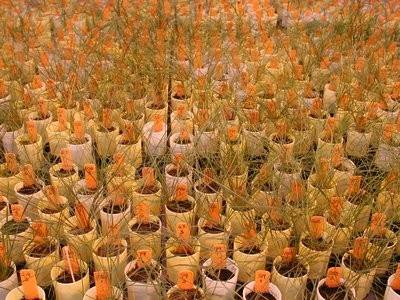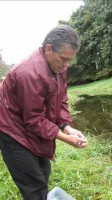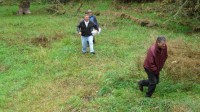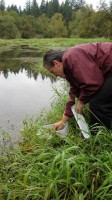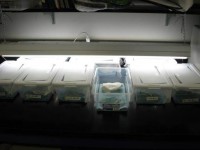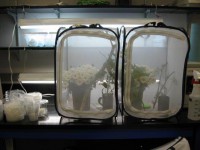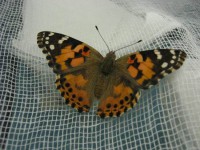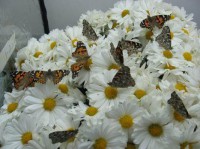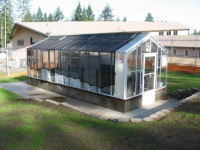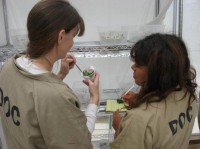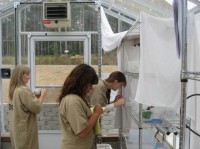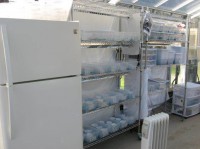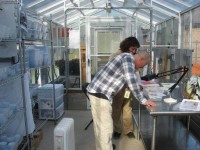“Stormwater: Life in the Gutter” at WCCW: Inmate blog
Editor’s note: This post was written by an inmate at Washington Corrections Center for Women (WCCW), where SPP hosts a monthly Science & Sustainability lecture series. On May 1, Stokley Towles, a performance artist and faculty member at The Evergreen State College, gave a highly entertaining presentation called “Stormwater: Life in the Gutter” to a group of nearly 40 inmates at WCCW.
Mr. Towles will be performing this piece for the public starting this Friday, May 4, at the Seattle Center. For more information, please see http://www.stokleytowles.com/.
Today I attended a 2 hour presentation of “Storm Watch” which took place in A Building at Purdy Prison, also known as WCCW, or vice versa.
WOW! Talk about an out-of-body experience! Not only was I able to get out of my cramped cell and leave the unit I live in; this is the first time in 5 years of being incarcerated here in WCCW that I actually felt like being part of a community.
Who would ever guess that hearing about bowel excretion could feel like connecting with one’s community?! No, really! This guy from the Sustainability in Prisons Project was showing us diagrams from a laptop and projector on one of the walls in the visiting room on how storm water and sewage is piped underground from neighborhoods, and pretty soon before I knew it, I was enthralled in the dialog of communication from offenders. This guy whose nickname was “Street” was beautiful – no kidding – he even showed us the hot pink socks he was wearing! Yeah, right there in the visiting room he props up his leg onto a table with the heel of his black, soft leather , worn dress shoe on the edge of the table and hikes up his beige chino slacks and displays his HOT PINK SOCKS! He, aka Street, says “I spend a lot of time with the sewage plant workers and garbage collectors, getting to know what they do on their jobs, actually walking around with them all day, seeing and hearing how they feel and what they think about what they’re doing. Everyone who works for the Seattle Sewage Plant gets a nickname. It’s for security reasons, because working for the City of Seattle is like being one big happy family and using an alias protects their identity out in the field”.
Today for just a minute I was out there – out in the field with Street, watching the sky for oncoming storms and climbing down storm drains (with a gas mask), checking out neighborhood ponds for “beaver workaholics”. Huh. Yeah. I felt like being connected to something other than being an offender incarcerated here in Prison. I sure the heck wasn’t thinking about all that chaos and drama back in the unit I live in during those brief 110 minutes or so.
Thank you, Sustainability-in-Prisons-Project!
Thank you Stokley Towles!
Thank you Brittany Gallagher!
Thank you AA Paula Andrew!
Please come back!!

Stokley Towles performs "Stormwater: Life in the Gutter" as part of SPP's Science and Sustainability Lecture Series at WCCW on May 1, 2012.
—
To donate to SPP and support science and sustainability education in unlikely places, please click here.
